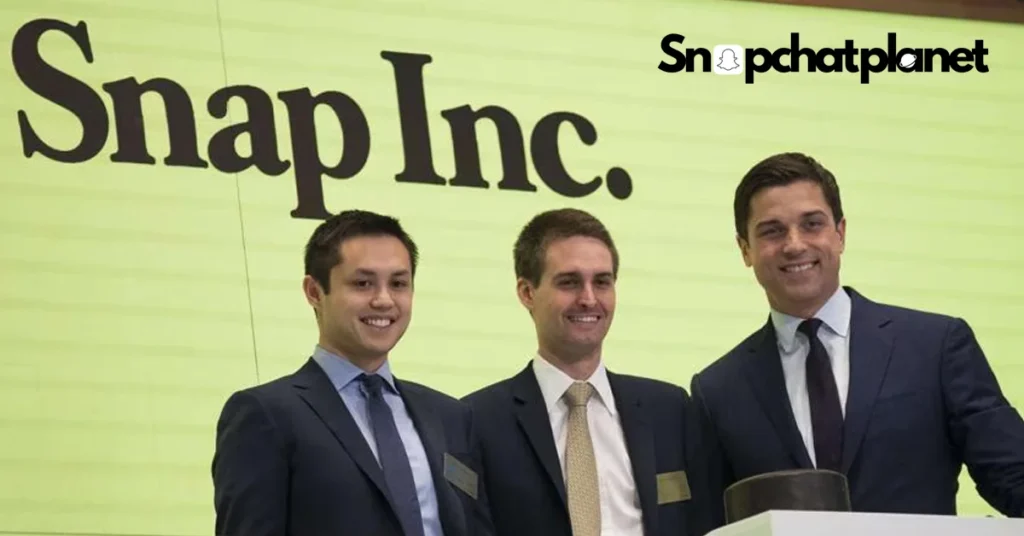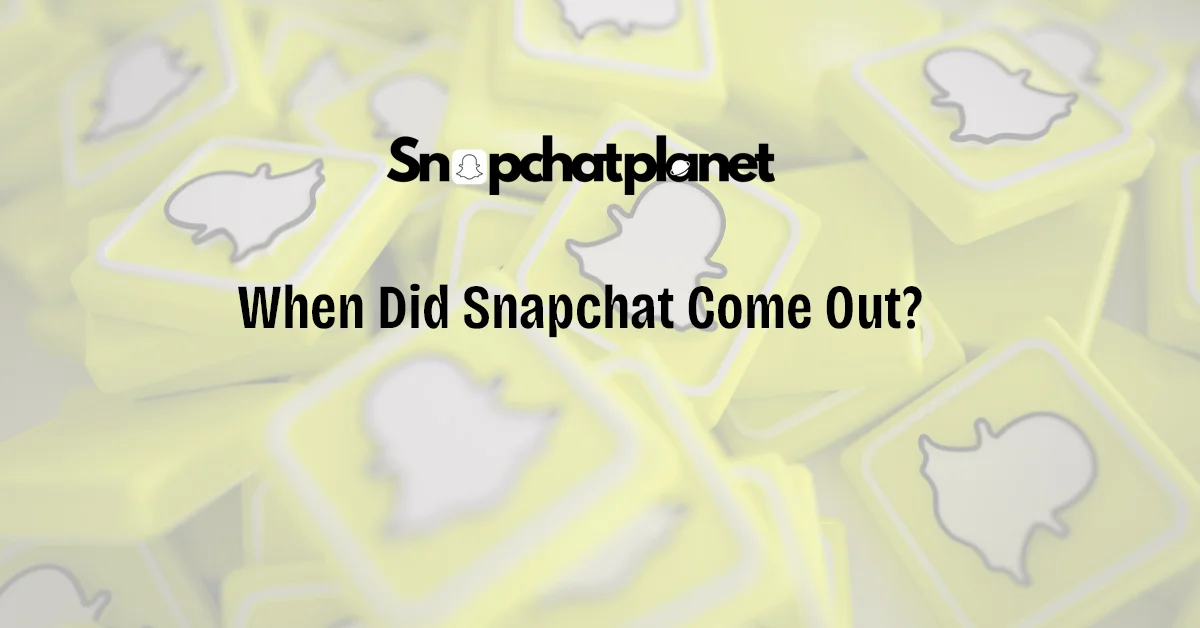Snapchat, a multimedia messaging app, has redefined digital communication since its debut. Its focus on ephemeral content attracted a massive user base, particularly among younger audiences. This article provides a detailed timeline of Snapchat’s launch, growth, and the milestones that have shaped it into one of the most popular apps in the world.
Table of Contents
Introduction to Snapchat: The Revolutionary Messaging App
What Is Snapchat?
Snapchat is a multimedia messaging app that allows users to send photos, videos, and messages (known as “Snaps”) that disappear after being viewed. Unlike traditional social media platforms, Snapchat focuses on short-term content, giving users a way to communicate without leaving a permanent digital trail. It has introduced innovative features like Stories, Lenses, and Geofilters, setting it apart from other messaging apps.
Who Owns Snapchat? The Founders Behind Snapchat
Snapchat was founded by Evan Spiegel, Bobby Murphy, and Reggie Brown. These three Stanford University students created the app with the idea of sending pictures and videos that would disappear after being viewed. Reggie Brown initially conceived the concept, while Evan Spiegel and Bobby Murphy helped develop and launch it. Their collaboration has built Snapchat into a multi-billion-dollar company that continues to grow and innovate.

Why Snapchat Stood Out Among Social Media Platforms
Snapchat introduced a unique take on digital communication by focusing on ephemeral messaging. Unlike Facebook or Instagram, which emphasized permanent content, Snapchat offered users a fleeting interaction, making it popular among those seeking privacy and spontaneity. Its innovative features like Stories, where users share photos and videos that last 24 hours, were later adopted by other platforms, proving Snapchat’s lasting influence in the social media landscape.
When & Where Was Snapchat Created
When Did Snapchat First Come Out?
Snapchat was first released in July 2011 under the name “Picaboo.” It was launched in the App Store from the living room of Evan Spiegel’s father’s house. Initially, the app allowed users to send disappearing photos, which became the app’s core feature. Snapchat was rebranded in September 2011, marking the beginning of its journey as the revolutionary app it is today.
The Story of ‘Picaboo’ and Its Rebranding to Snapchat
Originally launched as Picaboo, the app was soon forced to change its name due to a trademark conflict. In September 2011, the app was rebranded as Snapchat, a name that reflected its focus on quick, disappearing “Snaps.” This rebranding was more than cosmetic—it also marked a shift toward ephemeral messaging, which appealed to users looking for more temporary communication methods.
Where Was Snapchat First Launched?
Snapchat was first launched in the United States, specifically from California, where the founders were based. Initially, it gained popularity among students at Stanford University before expanding across other universities and eventually reaching a global audience. The app’s early focus on youth culture helped it grow rapidly within the teenage demographic.
Snapchat’s Evolution Over the Years: Key Milestones
2012: Snapchat Expands to Android
In October 2012, Snapchat expanded beyond iOS and launched its app for Android users. This expansion played a crucial role in growing its user base, allowing more people worldwide to join the platform. The app’s ability to cater to both major mobile operating systems helped establish its place in the global tech market.
2013: The Introduction of Stories
The introduction of Stories in October 2013 was one of Snapchat’s most significant updates. This feature allowed users to compile their Snaps into a 24-hour chronological narrative, which could be viewed by their friends. Stories quickly became a central part of the app’s experience and was later replicated by platforms like Instagram and Facebook, cementing Snapchat’s influence in the social media industry.
2014: Geofilters and Snapchat’s Rapid Growth
In August 2014, Snapchat introduced Geofilters, location-based overlays that allowed users to personalize their Snaps depending on where they were. This feature not only added a fun, interactive element but also opened new advertising opportunities for brands. By the end of 2014, 40% of U.S. adults were using Snapchat daily, highlighting its rapid adoption among mainstream users.
2015: Lenses and the Rise of Augmented Reality
Snapchat continued its innovation with the introduction of Lenses in 2015, bringing augmented reality (AR) into the platform. Lenses allowed users to add real-time effects to their Snaps using face detection technology. This feature, coupled with AR filters, significantly boosted user engagement and laid the groundwork for Snapchat’s long-term investment in AR technologies.
2016: Snapstreaks, Memories, and Bitmoji Integration
In 2016, Snapchat rolled out several major updates. Snapstreaks encouraged users to send Snaps to each other consistently, fostering greater interaction. Memories allowed users to save their favorite Snaps for later use, and the integration of Bitmoji added a layer of personalization by letting users create avatars to represent themselves in the app. These updates made Snapchat even more appealing to its core demographic.
2017: Snap Inc. Goes Public
Snapchat took a monumental step in March 2017 when its parent company, Snap Inc., went public on the New York Stock Exchange under the ticker symbol SNAP. This move brought in significant capital and allowed Snapchat to continue expanding its features and offerings. Despite facing competition from other social media giants, Snapchat maintained its unique position through innovation and its dedicated user base.
The Current Snapchat: Features, User Base, and Growth
How Snapchat Has Grown Since Its Launch
Since its inception in 2011, Snapchat has seen tremendous growth, both in terms of user base and features. Originally launched as a simple photo messaging app, Snapchat has evolved into a platform with over 750 million monthly active users as of 2023. This growth is largely due to the continuous introduction of new and engaging features like Stories, Lenses, and Geofilters, which have become industry standards. Snapchat’s ability to innovate and cater to its core demographic has been pivotal in maintaining its relevance in an increasingly competitive social media landscape.
Snapchat’s user base grew rapidly after its introduction of Android support in 2012 and features like Snapchat Stories in 2013. The app further solidified its position by incorporating augmented reality (AR) in 2015 with its Lenses feature. By 2016, Snapchat had grown to over 150 million daily active users, and it continues to attract millions of users globally.
Major Features That Define Snapchat Today
Several key features define Snapchat today, making it unique compared to other social media platforms:
- Stories: Introduced in 2013, Snapchat Stories allow users to post a series of photos and videos that disappear after 24 hours. This feature has been so popular that it was later adopted by Instagram and Facebook.
- Lenses & Filters: One of Snapchat’s most defining features is its use of augmented reality lenses and filters, allowing users to transform their faces or surroundings in real-time. These effects, like face swapping or adding funny elements, have significantly boosted user engagement.
- Snap Map: Introduced in 2017, Snap Map allows users to share their location with friends and view where other users are Snapping from around the world, adding a geographic layer to the app’s social interaction.
- Bitmoji Integration: Snapchat integrated Bitmoji in 2016, allowing users to create personalized avatars, which can be used in Snaps and chats, making the app more interactive and personal.
- Memories: Launched in 2016, Memories let users save their Snaps and Stories for later viewing, contrasting with the app’s original emphasis on ephemeral content.
- Snapchat Planets: One of Snapchat’s newest additions is the Snapchat Planets feature, part of the Best Friends list within the app. This feature adds a cosmic twist to visualizing your relationships on Snapchat by assigning each of your top eight friends a specific planet in the solar system.
Snapchat’s Target Audience and Popularity Among Younger Generations
Snapchat has maintained its dominance among teenagers and young adults, particularly those under 25 years old. This demographic is drawn to the app’s visual communication, playful features like Lenses and AR filters, and the ability to engage without leaving a permanent digital trail. Snapchat’s emphasis on privacy and ephemeral content resonates with younger generations who value instant, fleeting interactions.
As of 2023, the majority of Snapchat’s users are Gen Z and millennials, making it a top platform for brands looking to connect with this highly engaged and tech-savvy audience. Its success with younger users also positions Snapchat as a platform for self-expression and authentic interaction, differentiating it from other more polished, image-conscious social media apps.
Snapchat’s Future: What’s Next for the Popular App?
How Snapchat Is Evolving with Augmented Reality and AI
Looking ahead, Snapchat continues to invest heavily in augmented reality (AR) and artificial intelligence (AI) to enhance the user experience. Snapchat’s AR Lenses are already a big part of the app, and the company has introduced AI-powered tools such as My AI, a chatbot that leverages OpenAI’s ChatGPT. This feature allows users to interact with a personalized AI within the app, showcasing Snapchat’s commitment to keeping up with technological advancements.
The introduction of augmented reality shopping experiences is another step in Snapchat’s AR evolution. Users can virtually try on products such as clothing and accessories, providing an immersive shopping experience. As AR technology continues to advance, Snapchat aims to integrate it into more aspects of the app, making it a hub for interactive entertainment and e-commerce.
Upcoming Features and Snapchat’s Continued Innovation
Snapchat’s future is centered around expanding its AR capabilities and introducing new tools to keep users engaged. Upcoming features are likely to focus on enhanced AI-driven content recommendations, more personalized AR Lenses, and potentially expanded e-commerce options that allow users to shop directly within the app using augmented reality.
Another major area of innovation for Snapchat is its Snapchat+ subscription service, which offers users exclusive features such as seeing who re-watched their Stories and customizing their app experience. As of 2023, Snapchat+ has already surpassed 2 million subscribers, showing strong growth potential in this revenue stream.
In addition, Snapchat plans to continue its efforts in developing hardware products like Spectacles, which integrate augmented reality features. This aligns with their broader vision of bringing AR to everyday life, allowing users to capture and interact with the world around them in new and innovative ways.
Reflecting on Snapchat’s Journey from 2011 to Now
Since its launch in 2011, Snapchat has evolved from a simple photo messaging app to a platform with over 750 million monthly active users. Its innovative features, focus on ephemeral content, and ability to connect with younger audiences have cemented its place in the social media world. From Stories to AR Lenses and the integration of AI, Snapchat has continued to push the boundaries of what social media can offer.
As Snapchat looks to the future, its emphasis on augmented reality and artificial intelligence will be crucial to its continued success. With a dedicated user base and a commitment to innovation, Snapchat is well-positioned to remain a major player in the tech and social media industries for years to come.

Stephen is the author and creator behind Snapchatplanet.org, a platform dedicated to providing in-depth guides, updates, and insights about Snapchat’s latest features, including the popular Snapchat Planets. With a keen interest in social media trends and a passion for simplifying technology, Stephen ensures that his readers get clear, accurate, and up-to-date information.

